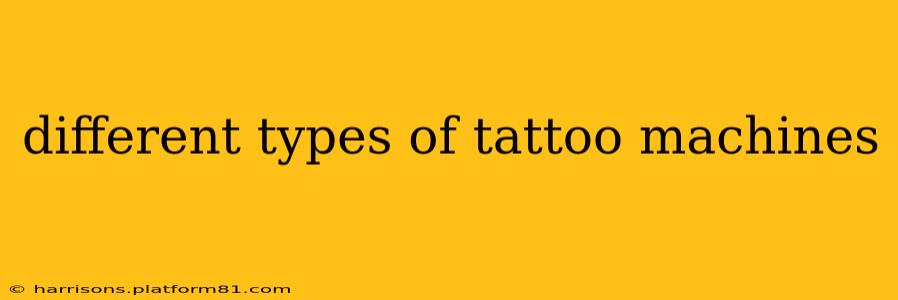The world of tattooing is rich with artistry and technology, and at the heart of it all lies the tattoo machine. These intricate devices, far from being simple tools, are precision instruments requiring skill and understanding to operate effectively. This guide delves into the different types of tattoo machines, exploring their nuances and applications.
What are the Main Types of Tattoo Machines?
Tattoo machines are broadly categorized into two main types: coil machines and rotary machines. While both achieve the same end goal—depositing ink into the skin—their mechanisms differ significantly, leading to variations in performance and feel.
Coil Tattoo Machines
Coil machines, the traditional workhorses of the tattoo industry, utilize electromagnetic coils to drive the needle. Their robust construction and powerful performance have made them a favorite among many artists for decades. Within this category, there are several subtypes:
-
Standard Coil Machines: These are the classic tattoo machines, known for their versatility and reliability. They are often preferred for lining and shading, offering excellent control and precision.
-
Liners: Specifically designed for creating crisp, clean lines, liner machines operate at higher speeds and with finer needles than shaders. They produce consistent ink flow for precise outlines.
-
Shaders: Shaders are designed for filling in larger areas with color and creating smooth gradients. They operate at lower speeds with wider needle groupings, resulting in a softer, more blended application of ink.
-
Round Liners/Shaders: These are versatile machines that can handle both lining and shading tasks, offering a balance of precision and coverage. They're often favored by artists who prefer a single machine for most applications.
Rotary Tattoo Machines
Rotary tattoo machines, a more modern development, use a rotating motor to drive the needle. They are typically quieter and lighter than coil machines, often considered gentler on the skin. Several variations exist within this category:
-
Pen Style Rotary Machines: Designed to mimic the feel of a pen, these machines are lightweight and ergonomically friendly, allowing for greater control and precision, especially in intricate work and small details.
-
Traditional Rotary Machines: These machines offer a balance of power and versatility, often used for a range of tattooing styles. They provide a smooth and consistent ink flow.
What are the Differences Between Coil and Rotary Tattoo Machines?
The choice between coil and rotary machines often comes down to personal preference and the specific tattoo style. Here's a comparison:
| Feature | Coil Machine | Rotary Machine |
|---|---|---|
| Mechanism | Electromagnetic coils | Rotating motor |
| Sound | Louder | Quieter |
| Weight | Heavier | Lighter |
| Feel | More powerful, “punchy” feel | Smoother, less aggressive feel |
| Maintenance | Requires more frequent maintenance | Generally requires less maintenance |
| Cost | Can range widely in price | Can range widely in price |
| Learning Curve | Steeper learning curve for beginners | Often considered easier to learn |
What Type of Tattoo Machine is Best for Beginners?
For beginners, rotary machines are often recommended due to their generally smoother operation and easier learning curve. Their lighter weight and quieter operation can make the learning process less daunting. However, mastering any type of tattoo machine requires dedication, practice, and mentorship.
Which Tattoo Machine is Better for Lining?
While both coil and rotary machines can be used for lining, coil liners are traditionally preferred for their precision and ability to create crisp, clean lines. However, high-quality pen-style rotary machines are also capable of producing exceptional linework.
Which Tattoo Machine is Better for Shading?
Similar to lining, both coil and rotary machines can handle shading. Coil shaders are often chosen for their ability to pack in color effectively and create smooth gradients. Rotary machines, particularly those designed for shading, also excel at this task, offering a smoother and less aggressive application.
This guide provides a comprehensive overview of the different types of tattoo machines. The best choice ultimately depends on individual preferences, artistic style, and experience level. Remember that proper training and apprenticeship are essential for anyone intending to use these powerful tools.
